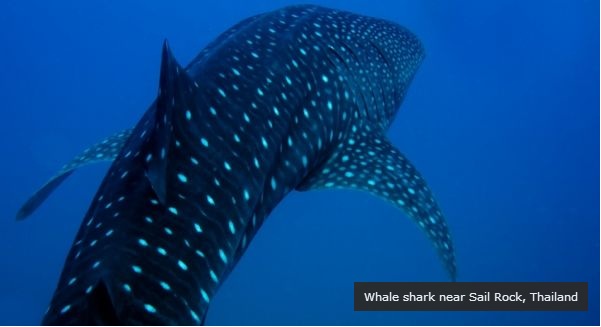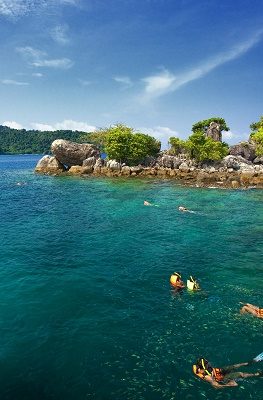Published on March 17, 2010

My face just beneath the surface of the sea, breathing rapidly through a snorkel after a hurried leap into the water, I looked where the guide was pointing but saw nothing. After half an hour on the Filipino outrigger, was this nothing but a false alarm?
Then there it was, suddenly, a huge dark shape heading our way. As I watched, amazed, the whale shark swam straight beneath us and into the depths. I was close enough to see its huge mouth and the pattern of white spots on its back.
Whale sharks are in the enviable position of being the biggest fish in the sea – and they are fish, the misleading ‘whale’ part oftheir name referring to their immense size and the fact that they feed on plankton. They have been recorded as reaching up to 12.5m in length, although there are unconfirmed reports that they may get even larger.
Yet despite this huge size whale sharks pose little threat to humans, as long as you stay well clear of their powerful tails. Their mouths may reach up to 1.5m in width, but their gullets are very narrow and they have no interest in harming you. Most encounters last only a few seconds, although my guide in Donsol told me that they have been known to hang out with snorkelers for up to 20 minutes.
First reported around South Africa in 1828, whale sharks are today often sought out by scuba divers. Fishermen in the Donsolarea had been driving away the creatures they call butanding for years because they damaged nets and scared away other fish, but the World Wildlife Fund (WWF) has helped them to develop a very popular ecotourism programme.
By controlling interaction with the whale sharks, limiting the number of boats and preventing them from crowding around creatures once spotted, it is hoped that tourism can remain sustainable. The WWF has also been working to tag whale sharks to learn about their migratory routes, and using a marking recognition system originally designed to map stars in the sky.

A whale shark and snorkeler off of Donsol, Philippines
Diving
What’s unusual in Donsol is that you can see the whale sharks without donning scubagear. If that appeals more, however, there are opportunities to dive with the creatures close to Donsol at a site known as the Manta Bowl. It’s a pretty intense drift dive, though, and when I visited I was not overly impressed by the quality of rental equipment. A better bet within the Philippines would be Padre Burgos in Leyte, which has a better choice of professional dive centers.
Elsewhere inthe region, a liveaboard boat is likely the best way to see whale sharks as sites tend to be far from shore. Richelieu Rock, out between the Similian and Surin islands, is considered Thailand’s top spot for whale sharks. A central pinnacle surrounded by smaller rocks, the site boasts excellent coral as well as manta rays and barracudas. A whale shark sighting is most likely to occur between February and April.
Myanmar’s Mergui Archipelago, also in the Andaman Sea and reached by liveaboard boat, is a little more off the beaten track than its Thai counterpart. The coral is pristine, and divers can expect to see white-tip and grey reef sharks, as well as a wide array of smaller life. The best time to see whale sharks is February to May.
There are also sites in the region which can be reached from shore. Lankayan may not offer Malaysia’s best overall diving – an accolade which probably belongs to Sipadan – but it does see whale sharks in April and May. Whale shark sightings in Pulau Weh (Indonesia) became much less frequent since the tsunami in 2004, but they can sometimes still be seen between Januaryand February.
John Oates is a freelance writer/ photographer and has travelled through much ofAsia.He recently spent a year based inthe Philippines while visiting several other ASEAN countries.






